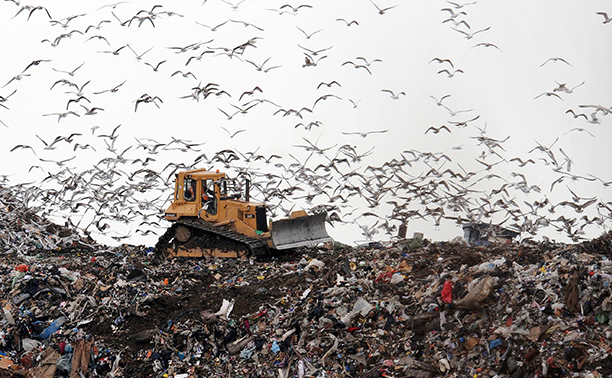
What is the carbon footprint of the 1.3 billion tonnes of food wasted each year?
by Tim Willmott : Comments Off on What is the carbon footprint of the 1.3 billion tonnes of food wasted each year?
The carbon footprint of food waste should be taken into account alongside the the weight of food wasted, says a new study. The research examined three years of food waste data from six branches of a Swedish supermarket and calculated the waste’s carbon footprint. On the basis of their footprint, key products that could be targeted for waste reduction include beef mince, meatballs and cream, the results suggest.
Globally, around 1.3 billion tonnes of food are wasted each year. In the EU, the figure is estimated to be about 90 million tonnes per year (based on 2006 data).
Food waste is a major problem for modern society. Not only is it an economic, social and — in a world where millions are going hungry — ethical problem, it is also an environmental problem. With agriculture estimated to account for around 15% of direct greenhouse gas (GHG) emissions from all EU production, food waste brings a high environmental cost with little to no benefit.
Most studies of food waste have mainly focussed on the amount of food wasted. However, this only gives an estimate of the environmental costs of this waste. In this study, researchers combined data on the weight of food waste with calculations on the carbon footprint of the different types of food in the waste streams.
They used data on perishable food wasted in five departments of a Swedish supermarket chain (meat, deli, cheese, dairy, and fruit and vegetables) from 2010 to 2012, across six of its stores.
Carbon footprints were calculated based on data in published scientific literature, and considered carbon dioxide (CO2), nitrous oxide and methane GHG emissions associated with production, processing and transport of food.
Over the three years, a total of 1 570 tonnes of food was wasted across the six stores — roughly 87 tonnes of waste per store per year. The total carbon footprint of the wasted food was equivalent to 2 500 tonnes of CO2equiv or 140 tonnes of CO2equiv per store per year.
However, these results only show part of the story. There were also large differences between the different departments in terms of waste and associated carbon footprints.
The fruit and vegetable department was responsible for 85% of the total waste, but only 46% of the total carbon footprint. The meat department, on the other hand, was responsible for only 3.5% of total waste, but 29% of the total carbon footprint. This study shows that the most efficient way to avoid causing climate-associated effects of food waste ‘in vain’ is to concentrate on reducing the waste of products with the highest carbon footprint and high waste rates.
The results also showed that the total wastage carbon footprint of a department tended to be concentrated within a few products. For example, the top three products, in terms of carbon footprint wastage, of the deli, cheese and dairy departments accounted for 20%, 22% and 31% of the department’s emissions, respectively. Minced beef meat alone was responsible for 19% of the meat department’s carbon footprint, and 5.5% of the total carbon footprint of waste. Other products with particularly large carbon footprints included meatballs and cream.
Identifying and prioritising products with a high wastage carbon footprint could provide a way of efficiently reducing the environmental impact of food waste, the study’s authors say.
Source: Scholz, K., Eriksson, M., & Strid, I. (2015). Carbon footprint of supermarket food waste. Resources, Conservation and Recycling 94, 56–65. DOI:10.1016/j.resconrec.2014. 11.016.
Contact: mattias.eriksson@slu.se
Reposted from Science for Environment Policy, which is published by the European Commission's DG Environment and edited by the Science Communication Unit (SCU), The University of the West of England




Comments are closed